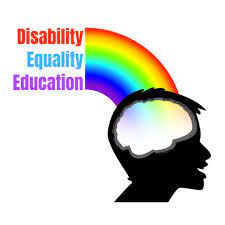Introduction
The Disability Equality Duty presents a significant opportunity to reshape our policies, practices, and attitudes in order to promote inclusivity and make tangible progress for individuals with disabilities. This article will explore the importance of implementing the new Disability Equality Duty, discussing its key components, benefits, and strategies for successful implementation.
Understanding the Disability Equality Duty
The Disability Equality Duty (DED) is a legal obligation placed on public institutions, ensured by legislation under the Equality Act 2010. It requires organizations to not only address disability-related discrimination but to actively promote equality for people with disabilities. The DED aims to supplement existing anti-discrimination measures, encouraging positive action towards disabled individuals rather than simply avoiding discriminatory behavior.
Key Components of the Disability Equality Duty
1. Eliminating discrimination: The DED requires organizations to take steps to identify and curb any forms of discrimination against people with disabilities.
2. Ensuring accessibility: Organizations are responsible for providing reasonable adjustments to ensure accessibility across their facilities and services. These measures include physical access, alternative communication formats and access to digital services.
3. Fostering good relationships: Creating a culture of understanding within an organization is paramount to successfully implementing DED. This means ensuring employees are educated about disabilities and trained in effective communication with disabled individuals.
4. Engaging with stakeholders: Employing meaningful consultation with disabled service users or employees allows organizations to gain insights into how they can improve their services or workplace practices.
5 Setting clear objectives: Finally, creating transparent objectives and monitoring progress enables organizations to identify areas that need improvement and track success effectively.
Benefits of Implementing the Disability Equality Duty
1. Enhanced service provision: By addressing barriers faced by disabled individuals, organizations can provide a more inclusive and effective service that meets the needs of all users.
2. Greater compliance with legislation: Implementing the DED reduces the risk of non-compliance and associated legal liabilities, ensuring protection for both organizations and individuals.
3. Improved reputation: Demonstrating commitment to disability equality can aid organizations in building a positive public image and attracting talented employees.
4. Increased employee satisfaction: A diverse and inclusive working environment fosters a positive atmosphere where employees feel valued and supported, leading to greater job satisfaction and productivity.
Strategies for Successful Implementation
1. Developing a comprehensive plan: Organizations should draft a clear strategy outlining their approach to implementing the DED, complete with objectives, timelines, and processes for monitoring progress.
2. Training and development: Providing appropriate training for staff to better understand and meet the needs of disabled individuals is crucial in successfully applying the DED.
3. Consultation with stakeholders: Engaging disabled individuals in the decision-making process will ensure organizations are more attuned to the needs of their service users or employees.
4. Collaboration between departments: Encouraging interdepartmental collaboration promotes shared responsibility for implementing the DED, enhancing overall effectiveness.
Conclusion
The Disability Equality Duty is an essential step towards achieving a more inclusive society where people with disabilities are truly valued and respected. By effectively implementing the DED, organizations demonstrate their commitment to fostering equal opportunities while unlocking significant benefits for disabled individuals, service users, employees, and society as a whole.











